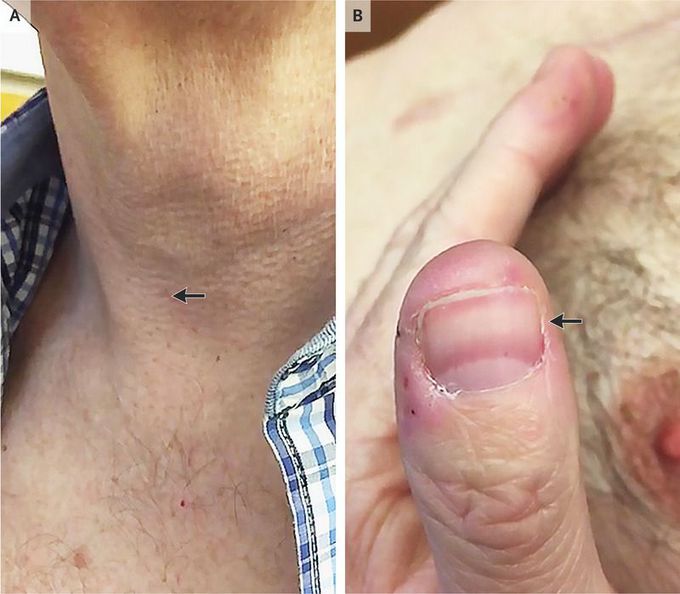


Corrigan’s Pulse and Quincke’s Pulse
A 58-year-old man was referred to the cardiology clinic for evaluation of exertional dyspnea. Twelve years before presentation, he had undergone a bioprosthetic aortic-valve replacement for treatment of severe bicuspid aortic stenosis and for repair of an ascending aortic aneurysm. On physical examination, his blood pressure was 142/57 mm Hg. Auscultation revealed systolic and diastolic murmurs that had a prominent holodiastolic component. While the patient was sitting upright, the right carotid artery was visibly pulsatile, with systolic swelling and rapid diastolic collapse — a sign known as Corrigan’s pulse . The tips of the patient’s index finger and thumb as well as the nail bed of the thumb exhibited capillary pulsation — a sign known as Quincke’s pulse . Corrigan’s pulse and Quincke’s pulse are two findings of chronic severe aortic regurgitation and are manifestations of a wide pulse pressure with large systolic stroke volume and rapid fall in arterial pressure. Echocardiography revealed a left ventricular ejection fraction of 56%, an end-systolic diameter of 46 mm (an increase from 36 mm measured in the previous year), and severe regurgitation of the prosthetic aortic valve. Because of progressive left ventricular dilatation and exertional dyspnea, the patient underwent valve-in-valve transcatheter aortic-valve replacement. The patient’s dyspnea resolved after the procedure, and he is currently doing well.

